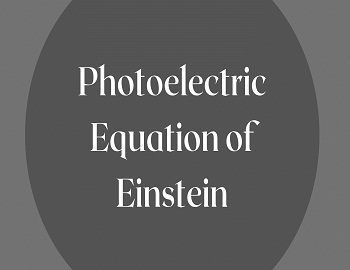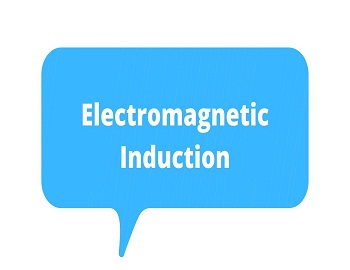Photoelectric Equation of Einstein:
The electromagnetic wave theory of light is unable to explain the laws concerning the photoemission of electrons. If a light wave is capable of emitting an electron, it was argued that a high-intensity light beam should emit an electron of higher kinetic energy, but this is not true. Further, the wave theory predicts a time lag between very weak illumination and the photoelectric effect, however, no time delay has been observed experimentally. Classical wave theory failed to predict the existence of a threshold frequency.
Einstein overcame these difficulties by adopting quantum ideas. He suggested that energy could be absorbed from the electromagnetic waves by electrons, but only in quanta of size hν where ‘ν’ is the frequency of light and h is Planck’s constant. These quanta of energy are known as photons.
Having postulated the existence of photons, Einstein explained the photoelectric effect on the basis of the law of conservation of energy. When a photon of energy hν strikes the metal, then the maximum kinetic energy, (1/2) mν2max available to any electron would be this incident energy hν minus minimum amount of energy W required to remove the electron from the metal. The minimum amount of energy required to remove an electron from metal is known as the work function and it is represented by W. Thus-
| (1/2) mν2max = hν – W Writing W = hν0 We get, (1/2) mν2max = hν – hν0 |
This shows that the minimum amount of energy that an incident photon should possess is hν0. This is the threshold energy for the emission of a photoelectron. No photoelectric effect is expected for light having a frequency less than ν0.
Einstein’s treatment solved a number of questions associated with the photoelectric effect. Firstly the existence of threshold frequency is explained. Secondly, it explained why the maximum energy possessed by photoelectrons depends on the frequency of light and not on the intensity. There is no time delay in photoelectric emission because an electron would be emitted immediately as and when a photon collides with the electron within the metal. Lastly, since the intensity of light is a measure of the number of photons, the larger the intensity, the greater will be the number of photoelectrons produced.









Comments (No)